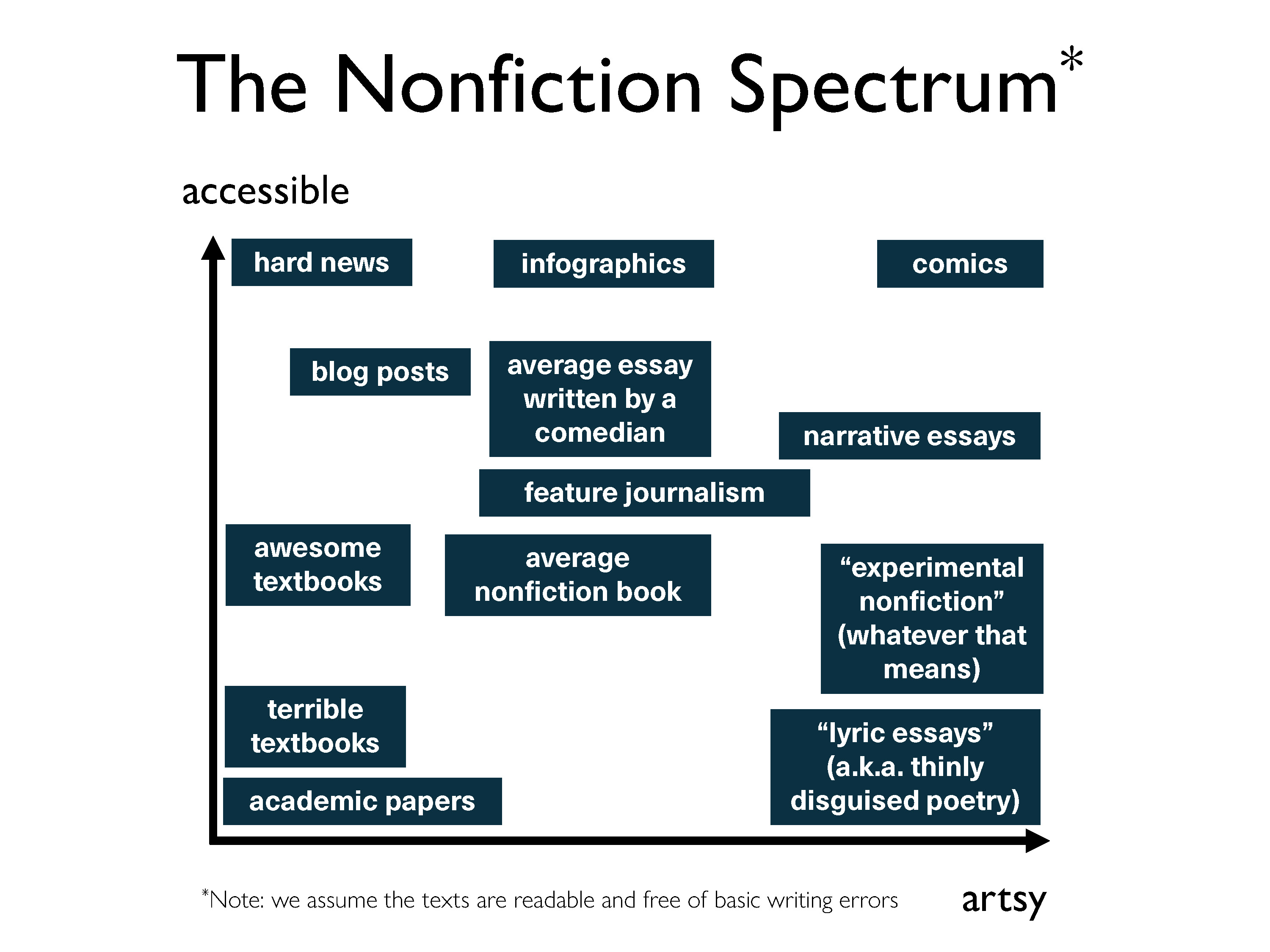The Nonfiction Spectrum
I write across multiple genres, but my main genre is Creative Nonfiction, which writers typically refer to as “CNF” for short. Unfortunately, I always end up having to explain what CNF is to people, because the common view of nonfiction seems to be that it’s entirely comprised of informative texts and academic essays (with maybe the occasional memoir slipped in).
Earlier today I was thinking about this, and I thought it would be really funny to place various types of “nonfiction writing” on a graph with labelled axes to prove my point. I present to you the “Nonfiction Spectrum”. On one axis, we have how “accessible” or easy to understand the text is; on the other, we have how “artistic” the presentation of the text is.

In the top left we have “hard news” articles, which are, for example, the types of breaking news articles you would see on your local news website (do people still read those???). They’re intentionally written at a low reading level so that most people can understand them. They also are bland as hell, since they tend to just throw facts at you and move on. In the bottom left, we have academic papers, which are equally as matter-of-fact as hard news while also being so full of technical language that they are readable by basically no one.
On the right side, we have works that are presented in a more “artistic” way. These also tend to also be works that are more subjective in nature, but not always. The further to the right you get, the less likely it is that you’ll come across a work that’s presented in a traditional essay format. Whether or not it should be called “nonfiction” has more to do with the content of the piece (is any of it made up? no? then it qualifies) than the form of the piece. In the bottom right, we have “lyric essays”, which are sometimes just thinly disguised poetry.
By the way, one of my favourite experimental nonfiction forms is the hermit crab essay, which is an essay written to look like a completely different form. This could be a series of tweets, a press release, a quiz… your imagination is the limit. This is often used in satire. A classic example is We Regret to Inform You by Brenda Miller, which is written to read like a series of rejection letters. A more recent example is Are You Allowed to Criticize Simone Biles?: A Decision Tree by Carlos Greaves – this one is super fun, go read it.
Anyway, I’m a very flexible nonfiction writer! I write across pretty much the entire spectrum (including academic writing… *sobs*), and I’d say my work is of pretty solid quality across most of it. But when I say that I consider my main genre as a literary writer to be CNF, I’m really talking about stuff on the right side of the chart. I think where I really shine as a writer is in the middle right of the chart – work that is in the sweet spot of artsy, yet accessible.
On that note, I have an essay published in Best Canadian Essays 2025 and you should totally go read it.